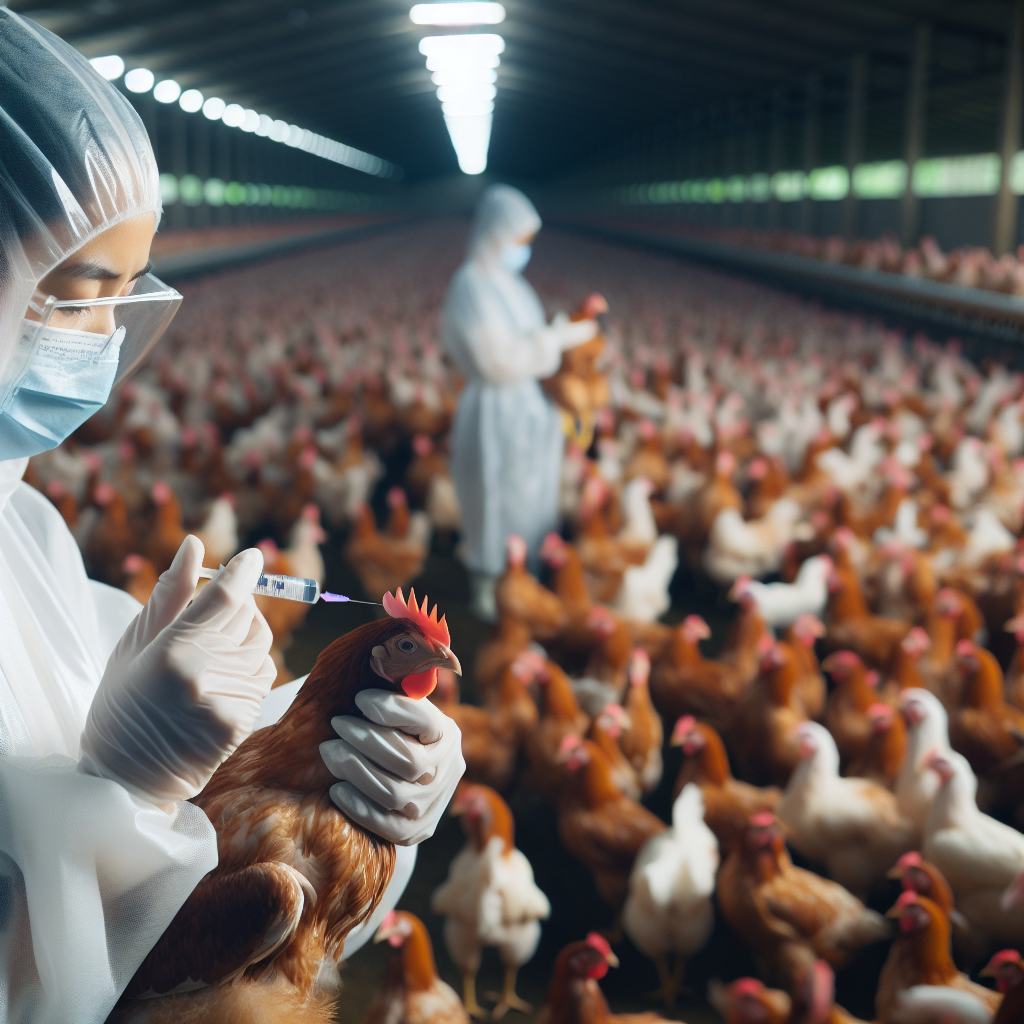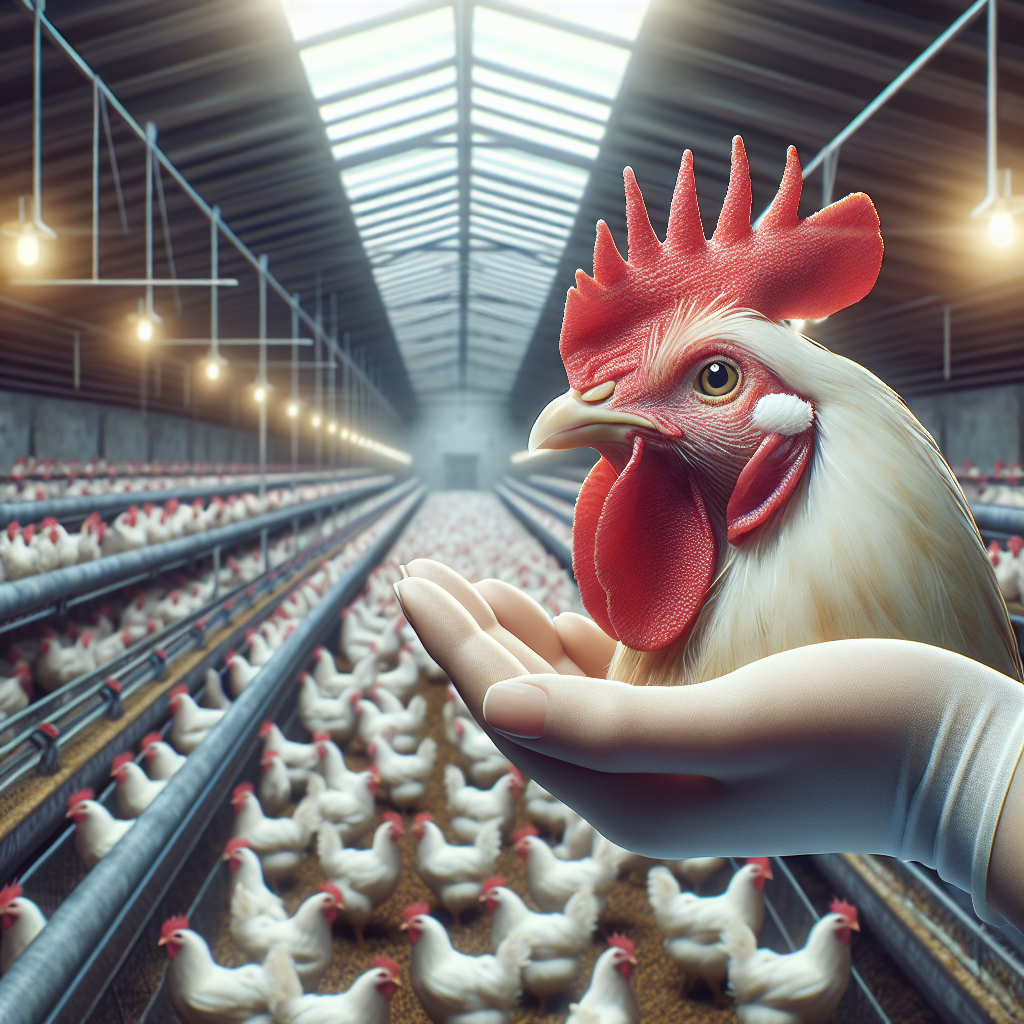In the ever-evolving world of the poultry industry, staying up-to-date with regional regulations is crucial for success. So, are there any emerging trends or anticipated changes in these regulations? With the ever-increasing demand for poultry products, it’s not surprising to see regional authorities considering new policies and guidelines to ensure the safety and welfare of both the animals and consumers. Whether it’s the implementation of stricter biosecurity measures, the promotion of sustainable farming practices, or the introduction of labeling requirements, these potential changes have the potential to greatly impact the industry. So, let’s take a closer look at what may lie ahead for the poultry sector’s regulatory landscape.
Changes in Antibiotic Use
Restrictions on Antibiotic Use
In recent years, there has been a growing concern about the overuse and misuse of antibiotics in various industries, including the poultry industry. Antibiotics have traditionally been used to promote growth and prevent diseases in poultry, but there is increasing evidence that this practice contributes to the development of antibiotic-resistant bacteria. To address this issue, many countries are implementing stricter regulations and restrictions on antibiotic use in poultry production. These regulations aim to limit the use of antibiotics solely for therapeutic purposes and prevent their routine use as growth promoters.
Alternative Approaches to Antibiotic Use
In light of the restrictions on antibiotic use, the poultry industry is exploring alternative approaches to maintain the health and well-being of birds. One such approach is the use of probiotics and prebiotics, which are beneficial bacteria and substances that promote healthy gut flora. These can help boost the natural immune system of the birds and reduce the need for antibiotics. Additionally, the industry is investing in research and development of vaccines, improved biosecurity measures, and better management practices to prevent diseases and reduce the reliance on antibiotics.
Regulations on Antibiotic Resistance
To tackle the global issue of antibiotic resistance, regulatory bodies are working towards establishing comprehensive regulations and guidelines. These regulations aim to promote the responsible use of antibiotics in the poultry industry and minimize the risk of antibiotic-resistant bacteria spreading to humans through the food chain. The focus is on implementing effective surveillance systems to monitor antibiotic use and resistance patterns, promoting research on new antibiotics and alternative treatment methods, and encouraging collaboration between government authorities, veterinarians, farmers, and researchers to ensure prudent antibiotic use.
Food Safety Regulations
Stricter Pathogen Controls
Food safety is a top priority for both consumers and regulatory bodies. To ensure the safety of poultry products, stricter pathogen controls are being implemented at various stages of production and processing. This includes implementing Hazard Analysis and Critical Control Points (HACCP) systems, which identify and control potential hazards, such as bacterial contamination, at critical points in the production process. Additionally, regular testing and monitoring of poultry products for pathogens like Salmonella and Campylobacter are being enforced to minimize the risk of foodborne illnesses.
Improved Contamination Detection
With the advancement of technology, there are emerging methods for improved contamination detection in the poultry industry. Rapid and accurate testing techniques are being developed to quickly identify and quantify pathogens, allergens, and other contaminants in poultry products. These methods allow for early detection and intervention, ensuring that contaminated products are not distributed to consumers. By enhancing contamination detection, regulators aim to prevent foodborne disease outbreaks and maintain public confidence in the safety of poultry products.
Traceability and Labeling Requirements
Traceability and labeling requirements are becoming increasingly important in food safety regulations, including those specific to the poultry industry. These regulations aim to ensure transparency in the supply chain and enable swift and effective recalls in the event of a food safety issue. Poultry products are required to be properly labeled with information such as the country of origin, processing date, and packaging facility. Additionally, the implementation of unique identification systems, such as barcodes or QR codes, allows for easier traceability back to the source of production.
Animal Welfare Standards
Enhanced Housing and Space Requirements
Animal welfare has gained significant attention in recent years, leading to regulations that mandate enhanced housing and space requirements for poultry. These requirements aim to provide birds with a comfortable and stress-free environment that allows for natural behaviors. Standards for cage-free systems, enriched cages, or free-range systems are being implemented to ensure adequate space and access to perches, nest boxes, and dust-bathing areas for the birds. By promoting better animal welfare, regulators aim to improve the overall health and quality of life for poultry.
Humane Slaughter Practices
Regulations regarding the humane slaughter of poultry have been in place for many years, but there is a growing emphasis on enforcing and updating these standards. The objective is to minimize the stress and pain experienced by the birds during the slaughtering process. This includes measures such as proper stunning techniques, ensuring quick and effective killing methods, and implementing rigorous inspections to ensure compliance with humane slaughter practices. By prioritizing the welfare of animals during the slaughtering process, regulators aim to uphold ethical standards and address concerns raised by animal rights organizations and consumers.
Transportation and Handling Regulations
Transportation and handling of poultry are critical stages in the production chain that can greatly impact animal welfare. To address this, regulations are being implemented to ensure that poultry is transported and handled in a manner that minimizes stress and prevents injuries. Requirements for proper ventilation, temperature control, and suitable flooring in transportation vehicles are being enforced. Additionally, guidelines for the handling and loading/unloading of birds aim to prevent overcrowding, rough handling, and unnecessary suffering during transportation. These regulations are vital for maintaining the health and welfare of poultry from farm to processing facilities.
Environmental Regulations
Waste Management and Pollution Control
The poultry industry, like any other agricultural industry, generates a significant amount of waste that can pose environmental challenges if not managed properly. To mitigate the environmental impact, regulations are being implemented to ensure proper waste management practices. This includes the treatment and disposal of poultry waste, such as manure, to minimize odor, prevent contamination of water sources, and reduce greenhouse gas emissions. The implementation of anaerobic digesters or composting systems is being encouraged to capture and utilize the energy potential of the waste while reducing its environmental impact.
Emissions and Air Quality Standards
Air quality regulations are being developed and enforced to address the potential emissions and odors associated with poultry production. These regulations aim to manage odors, ammonia, and other gaseous emissions from poultry housing facilities. This includes the installation of ventilation systems, air scrubbers, and biosecurity measures to minimize the release of pollutants into the atmosphere. Monitoring of air quality is also being prioritized to ensure compliance with emission standards and protect the health and well-being of both poultry and nearby communities.
Water Usage and Conservation Measures
Water is a vital resource in poultry production, and its efficient use and conservation are important goals for regulatory bodies. Regulations are being implemented to encourage the adoption of water-efficient technologies and practices in poultry farms and processing facilities. This includes the use of automated watering systems, recycling and reusing water where feasible, and implementing water management plans to minimize wastage. By promoting responsible water usage and conservation, regulators aim to minimize the industry’s impact on water resources and ensure long-term sustainability.
Regional Trade Agreements
Harmonization of Standards
Regional trade agreements aim to promote cross-border trade while ensuring that products meet certain quality and safety standards. One trend in regional regulations for the poultry industry is the harmonization of standards among participating countries. This involves aligning regulations, requirements, and testing methods to create a level playing field for poultry producers and facilitate trade. Harmonization reduces unnecessary barriers to trade and encourages cooperation among countries in sharing best practices and ensuring the consistent application of standards.
Import and Export Regulations
Import and export regulations play a crucial role in the poultry industry, determining the conditions for the movement of poultry products across borders. There is a growing trend towards stricter import regulations to ensure that imported poultry products meet the same safety and quality standards as domestically produced ones. These regulations often involve rigorous inspection and certification processes, as well as restrictions on certain imports to protect against the entry of diseases or contaminants. Export regulations also focus on meeting the specific requirements of target markets to ensure market access and maintain international trade relationships.
Inspections and Certifications
Regulatory authorities conduct inspections and issue certifications to ensure compliance with regional and international standards for poultry production and processing. Inspections may cover various aspects, including farm operations, processing facilities, and transportation. Certification programs, such as GlobalG.A.P. (Good Agricultural Practices) and BRC (British Retail Consortium), are being implemented to provide assurance to consumers and trading partners that the poultry products meet specific quality and safety standards. Inspections and certifications enhance the credibility and competitiveness of the poultry industry in regional and international markets.
Labeling and Transparency
Country of Origin Labeling
Country of Origin Labeling (COOL) regulations require poultry products to be labeled with their country of origin. COOL provides consumers with information about where the product was produced, enabling them to make informed purchasing decisions. These regulations are aimed at promoting transparency in the market and supporting domestic producers by allowing consumers to choose domestically produced poultry products over imports. Labeling requirements may also extend to indicate the production method, such as organic or conventional, providing further transparency to consumers.
Genetically Modified Organisms (GMO) Labeling
GMO labeling regulations are gaining traction worldwide, allowing consumers to know if the poultry products they purchase contain genetically modified ingredients. These regulations aim to address concerns about the potential health and environmental impacts of GMOs and provide consumers with the choice to avoid or support these products. GMO labeling requirements vary by region, with some countries mandating explicit labeling of GMO ingredients, while others adopt voluntary labeling systems. By implementing GMO labeling, regulators seek to ensure transparency and allow consumers to make informed choices about the poultry products they purchase.
Claims and Certifications
Various claims and certifications can be found on poultry product labels, providing consumers with additional information about the product’s attributes. Organic, free-range, antibiotic-free, and humane certifications are increasingly common in the poultry industry. Regulations are in place to ensure the accuracy and validity of these claims and certifications, protecting consumers from false or misleading information. Regulators conduct audits and inspections to verify compliance with specific production and processing standards, allowing consumers to choose products that align with their preferences and values.
Regulations on Residue Limits
Maximum Residue Limits (MRLs)
Maximum Residue Limits (MRLs) are regulations that define the acceptable levels of chemical residues, such as pesticides and veterinary drugs, in poultry products. These limits are established based on scientific assessments considering consumer safety and food quality. MRLs help ensure that poultry products are free from harmful residues that could pose health risks to consumers. Regular monitoring and testing are conducted to enforce compliance with MRLs, and strict penalties may be imposed for violations. By implementing MRL regulations, regulators aim to safeguard public health and maintain consumer confidence in the safety of poultry products.
Chemical and Pesticide Use Monitoring
Regulations are in place to monitor the use of chemicals and pesticides in poultry production and prevent their excessive or inappropriate use. These regulations typically require poultry farmers to keep detailed records of the chemicals and pesticides used, including the type, application rates, and withdrawal periods. Regular inspections and testing may also be conducted to verify compliance with regulations and ensure that prohibited substances are not present in poultry products. By monitoring chemical and pesticide use, regulators aim to minimize environmental impact and protect consumer health.
Analytical Testing Requirements
Analytical testing is an essential component of enforcing regulations and ensuring compliance with safety standards in the poultry industry. Testing may involve the analysis of poultry products for the presence of contaminants, such as heavy metals, microbiological pathogens, or allergens. These regulations set the requirements for testing methods, sampling protocols, and laboratory accreditation to ensure accurate and reliable results. Regular and random testing is conducted to detect any non-compliance and address any potential risks to public health. Analytical testing requirements aim to maintain the safety and integrity of poultry products in the market.
Emerging Technologies
Gene Editing and Genetic Modifications
Advancements in gene editing technologies offer potential benefits for the poultry industry. Gene editing techniques, such as CRISPR-Cas9, allow for targeted modifications of the poultry genome to enhance desirable traits, such as disease resistance or improved productivity. Regulatory bodies are closely monitoring and developing guidelines for the responsible use of gene editing technologies in poultry production. These regulations aim to strike a balance between allowing the benefits of genetic modifications while ensuring the safety of the animals and maintaining consumer confidence in the final products.
Precision Agriculture and Monitoring Systems
Precision agriculture technologies, such as remote sensing, drones, and data analytics, are finding applications in the poultry industry. These technologies enable farmers to collect and analyze real-time data on environmental conditions, feed management, and animal health, allowing for more precise decision-making. Regulatory bodies are observing these advancements and considering the implications for regulations related to data privacy, animal welfare, and environmental impact. The goal is to ensure that the use of precision agriculture technologies aligns with existing regulations and fosters sustainable and efficient poultry production.
Smart Farming and Automation
The adoption of smart farming and automation technologies, such as robotic systems for feeding and monitoring, has the potential to revolutionize the poultry industry. These technologies improve efficiency, reduce labor requirements, and enhance animal welfare by automating various tasks. Regulatory bodies are addressing the implications of these emerging technologies, including issues related to animal welfare, food safety, and worker safety. Guidelines and regulations are being developed to ensure that the use of smart farming and automation in the poultry industry is implemented responsibly and aligned with existing regulatory frameworks.
Labor Rights and Employment Laws
Worker Safety and Protection
Labor rights and employment laws play a vital role in ensuring the safety and well-being of workers in the poultry industry. Regulations cover aspects such as workplace safety, training, personal protective equipment (PPE), and ergonomics. Proper handling of machinery, equipment, and chemicals is also emphasized to minimize the risk of accidents and occupational hazards. Regulatory bodies enforce compliance with these regulations through inspections and audits, ensuring that workers are provided with a safe working environment and adequate protections.
Minimum Wage and Working Hours
Regulations related to minimum wage and working hours aim to protect workers in the poultry industry from exploitation and unfair labor practices. These regulations set minimum wage rates and establish limits on working hours, ensuring that workers receive fair compensation for their work and have sufficient time for rest and personal activities. Regulatory bodies monitor compliance with these regulations to prevent wage theft, overtime abuses, and other labor rights violations. By enforcing minimum wage and working hour regulations, regulators aim to promote fair employment practices and safeguard worker rights.
Unionization and Collective Bargaining
Labor unions and collective bargaining rights are important components of labor rights in the poultry industry. Regulations protect the rights of workers to form labor unions and engage in collective bargaining with employers. This allows workers to negotiate for better working conditions, wages, and benefits. Regulatory bodies ensure that employers respect these rights and do not hinder workers’ ability to exercise them. These regulations provide workers with a means to voice their concerns and participate in decisions that affect their working conditions and well-being.
Government Subsidies and Incentives
Support for Sustainable Practices
To incentivize sustainable practices in the poultry industry, governments may provide subsidies and financial assistance to encourage farmers to adopt environmentally friendly and socially responsible practices. This could include support for the implementation of waste management systems, renewable energy initiatives, or the adoption of organic production methods. By providing subsidies and incentives, regulatory bodies aim to promote sustainability and reduce the environmental impact of poultry production while supporting the financial viability of farmers.
Investments in Research and Development
Research and development (R&D) are crucial for the advancement of the poultry industry and the adoption of new technologies and practices. Governments may provide funding and grants to support R&D initiatives in the poultry sector. This investment helps drive innovation, improve animal health, enhance food safety, and address emerging challenges in the industry. By supporting R&D, regulatory bodies aim to foster a sustainable and competitive poultry industry that can respond to evolving consumer demands and global trends.
Tax Breaks and Financial Assistance
Tax breaks and financial assistance programs are tools used by regulatory bodies to support the poultry industry and encourage economic growth. Governments may offer tax incentives, such as reduced tax rates or exemptions on certain inputs or equipment used in poultry production. Financial assistance programs, such as low-interest loans or grants, can also be implemented to help poultry farmers invest in modernization, expand their operations, or overcome financial challenges. Tax breaks and financial assistance aim to create a favorable business environment for the poultry industry and contribute to the overall economic development of the region.
In conclusion, emerging trends and anticipated changes in regional regulations for the poultry industry are focused on various aspects, including antibiotic use, food safety, animal welfare, environmental impact, trade agreements, labeling transparency, residue limits, emerging technologies, labor rights, and government subsidies. These regulations aim to promote responsible and sustainable practices, ensure the safety and well-being of consumers and farm animals, protect the environment, facilitate trade, provide transparency to consumers, and support the growth of the poultry industry. By addressing these key areas through comprehensive regulations, regulatory bodies work to balance the needs of the industry, consumers, and the environment, ensuring a thriving and responsible poultry industry for the future.




